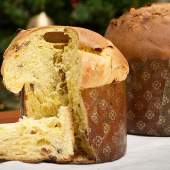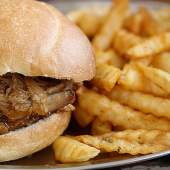Cake

“A party without cake is really just a meeting.”
— Julia Child
“Where there is cake, there is hope. And there is always cake.”
— Dean Koontz
Marie-Antoinette never actually said, “let them eat cake.” But it’s a safe bet that she really liked cake, because who doesn’t?
Whether it’s a rich torte, an elegant gateau, or a lavishly decorated cupcake from a high-end bakery; a sheet cake from your local grocery; or a cake made from scratch (or a boxed mix — we won’t judge!), few can resist a serving of arguably America’s most popular dessert (if you don’t count pie). Not to mention that we associate cakes with happy occasions — birthdays, anniversaries, and celebrations in general (after all, when was the last time you saw a funeral cake?).
It’s very likely that cake began its existence as flat, unleavened bread. How it gradually rose (figuratively) to the level of cake as we know it isn’t precisely known, but it is said that as an ever-increasing number of ingredients were developed — flour, honey, sugar, butter and lard, among others — and baking techniques and equipment evolved, bakers began branching out. The result of their experimentation, eventually, was cake, from the Old Norse/Viking word kaka.
The first true cakes may have been fruitcakes sweetened with honey — all the rage in ancient Rome (and later, England) — and it is rumored that the ancient Greeks had a primitive version of cheesecake. By the middle of the 17th century, cakes (for the well-to-do, at least) had become quite elaborate and in some cases extremely large — a recipe exists for a cake that called for more than 35 pounds of flour. No word on whether creations like these were actually edible or just to impress, but once baking soda and baking powder (and ovens with temperature controls) were invented, cakes were suddenly within the capabilities of home bakers, whose creativity was limited only by the size of their ovens and the ingredients available.
For the origins of birthday cake (and one theory as to why classic cakes are round), we have to go back to the ancient Greeks, who, according to the ProFlowers blog, “would make round cakes to honor Artemis, the goddess of the moon. The lit candles on the cake represented the glow of the moon, and the smoke from the candles carried their prayers and wishes to the Gods who lived in the skies.” (Think about that the next time you’re in the bakery aisle at Costco.)
Here are some backstories behind just a few of our most popular cakes:
- Bundt cake — Despite its Old World appearance, the bundt cake was made possible in 1950 via a special aluminum pan invented by H. David Dalquist of the Nordic Ware Company, at the request of a Jewish women’s group attempting to replicate a ring-shaped German cake called a kugelhopf. Originally named a “bund” pan for “alliance,” Dalquist later added the “t” either for trademark purposes or to differentiate it from a German-American pro-Nazi group of the same name. The bundt cake really caught on in 1966 after a version of it came in second in the Pillsbury Bake-Off. Later, the bundt cake made a memorable appearance in My Big Fat Greek Wedding.
- Angel food cake — Another cake with a hole in the center, this light and airy confection dubbed “food of the angels” contains no butter or egg yokes — only stiffly beaten egg whites, sugar, and cream of tartar like meringue, to which is added vanilla flavoring and cake flour. It is baked in a tall tube pan and more often than not, served with fruit or a fruit sauce, or topped with a glaze. Angel food cake probably owes its existence to the invention of the rotary egg beater in the 1860s, and the first recipe with that specific name comes from Fannie Merritt Farmer’s 1896 updated edition of the Boston Cooking School Cook Book.
- Devil’s food cake — This, as cake aficionados know, is the polar opposite of angel food cake — rich, dark, and chocolaty. Its name came about for purely practical purposes: in the early 20th century, cakes with chocolate in the batter were rare, and the universal definition of a “chocolate cake” was a yellow cake with chocolate frosting. Nobody knows exactly who came up with the catchy name “devil’s food,” but the first instance of a recipe in print was in Mrs. Rorer’s New Cook Book in 1902.
- German chocolate — Read its story here.
- Red velvet cake — While “velvet cake” has been around since the 1870s, the “red” version of it may have come from the Adams Extract Company, where you can still find its “original recipe,” billed as “The Cake of a Wife Time,” clearly a product of its era. The cake’s red hue, contrary to legend, was not due to the addition of beets, but rather a copious amount of red food coloring. The red velvet cake’s popularity waned in the late 1970s after Red Dye No. 2 was banned by the FDA, but like the bundt cake, it came back into vogue due to its inclusion in a film: the famous armadillo cake in 1989’s Steel Magnolias.
So many cakes, too little time! More cake stories in a future installment.





